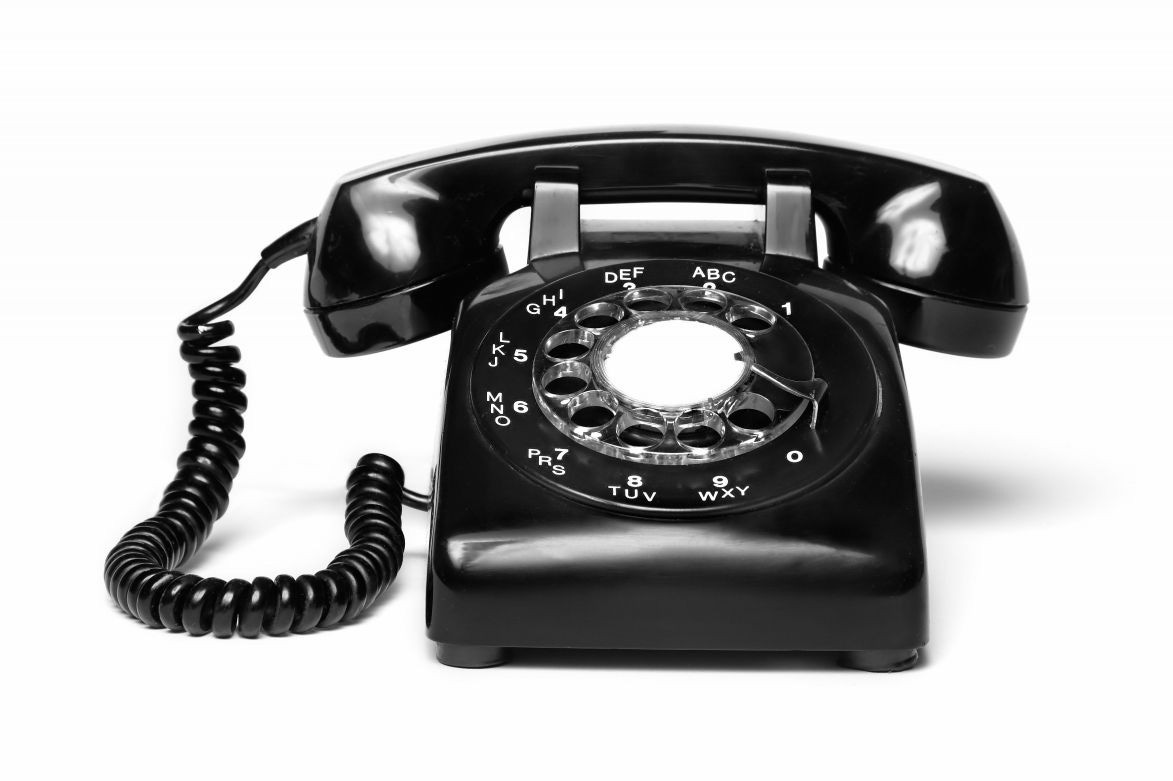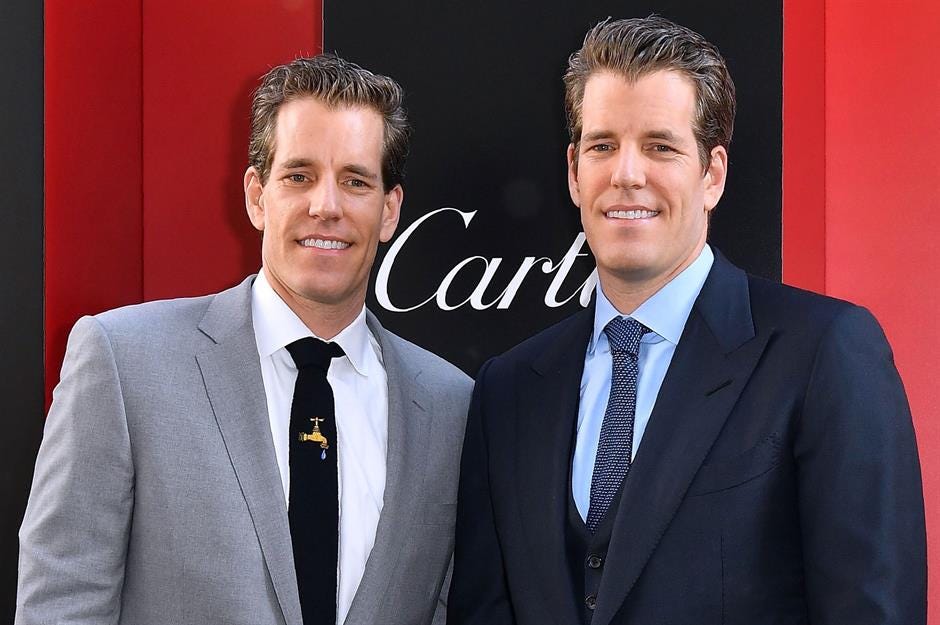Ideas Alone Aren't Innovations
There's no such thing as a million-dollar idea until you put the energy in to make it real.
I’m working on a long-form piece about my work in the early days of the foreclosure fraud movement. Until then, here’s a shorter piece — tied to that one in spirit — about the need to actually do something rather than merely talk about it. Innovation without implementation is nothing.
Subscribe to this newsletter:
Years before central power stations the telegraph’s popularity was booming. It wasn’t lost on anybody that whoever could transmit voice over a wire would have an enormously useful and valuable invention. During the Civil War, there were wagon trains filled with Voltaic Pile batteries powering quickly assembled telegraph lines that stretched from the front-line to the White House.
Given the popularity of long-distance communication, it wasn’t lost on inventors a system that transmitted voice rather than Morse Code would be a smash hit. The need and value were apparent leaving only a technological challenge, the inverse of too many questionable inventions.
This led to several people who may have invented the telephone. Ever heard of Antonio Meucci? Don’t worry, most people haven’t but there’s a proclamation from the United States House of Representatives that “the life and achievements of Antonio Meucci should be recognized, and his work in the invention of the telephone should be acknowledged.”
There are a few people who claimed to have invented the telephone but only two of them are well-known, Scottish-American Alexander Graham Bell and Elisha Gray. In 1874, both Bell and Gray went to the patent office with competing diagrams for a working phone. The US Government had abolished the requirement to produce a working invention to secure a patent in 1870 but the patent office hadn’t implemented the change yet. Shortening a long story, Bell got his phone to work, rushed it to the patent office, and became fabulously wealthy.
The ability to make a working machine, as opposed to the idea of one, is the reason we had the Bell Telephone Company (transferred to its subsidiary, American Telephone & Telegraph, AT&T, in 1899) rather than the Gray Telephone Company.
Bell, Gray and more than a few others realized transmitting voice over a telegraph-like wire would be useful, that it could create buyer value. However, the idea itself was not useful until it was executed into a working machine.
The founders of the US laid out their reason for a patent office in Article 1, Section 8 of the US Constitution: “To promote the Progress of Science and useful Arts, by securing for limited Times to Authors and Inventors the exclusive Right to their respective Writings and Discoveries…”
Reiterating, the purpose of patents isn’t to help inventors; it’s to help society.
Realizing inventors needed a financial incentive to invest the time and money needed to invent, the founders gave them exclusivity for a limited time.
Getting back to Bell, Gray, and the others, history would be different if one of the many people who thought “it sure would be useful to talk over a wire rather than send Morse Code” was able to patent it. If the government granted a patent on the telephone on the idea alone, it would have created a massive disincentive for the actual inventors. There would’ve been no reason for Bell to go to the hassle of his many iterations if he had to pay some shmuck who, rather than write science-fiction, instead wrote their dreams into patents of potentially useful machines.
Patents are supposed to be for useful non-obvious inventions, not ideas, because ideas alone are not useful. Ideas without execution do not promote the progress of science and the useful arts, they do not help society advance. Patented ideas without implementation simply drain money from those who do. Furthermore, useless patents clog up the system.
Critical readers would argue the US Patent & Trademark Office (USPTO) has certainly been granting idea-based patents, especially the “business method patent.” This is relatively new: for most of US history, the patent office rightfully took the position that business ideas, mathematic formulas, algorithms, were all ineligible for patent protection.
However, with the invention of the world-wide-web, they decided everything is different and made all sorts of both ideas and obvious inventions patentable. Specifically, the patent office started issuing patents for taking any idea or concept in the real-world and doing the same on the internet. Furthermore, there was a cultural shift in favor of issuing rather than rejecting patents.
Starting in the 1990s, the USPTO went on a bender, rubber-stamping every half-baked idea submitted. IBM patented the out-of-office email reminder in 2017. Apple patented round rectangles in 2012 and glass staircases in 2013. Somebody patented swinging sideways.
In 2014, realizing the patent system was entirely out of control and arguably doing more harm than good, the US Supreme Court reverted the law in a unanimous decision. In Alice Corp. v. CLS Bank International, 573 U.S. 208 (2014) they made ideas and obvious inventions impossible to patent and also opened the prior abusive patents to invalidation.
The Court wrote: “Laws of nature, natural phenomena, and abstract ideas are ‘the basic tools of scientific and technological work.’ … ‘[M]onopolization of those tools through the grant of a patent might tend to impede innovation more than it would tend to promote it,’ thereby thwarting the primary object of the patent laws. … We have ‘repeatedly emphasized this . . . concern that patent law not inhibit further discovery by improperly tying up the future use of’ these building blocks of human ingenuity.”
All of which brings us back to the core point: ideas alone are worthless except to science-fiction writers. That’s true in patent law and it’s also true in reality.
If you bring an idea to an investor and do not have a strong background launching impactful startups they should shrug you off. If you have a great idea, they may help you find somebody to implement it but, most likely, they’ve already heard it or a close derivative before. Ideas alone are worthless which is one of the core reasons accredited angel investors and venture capital firms refuse to sign nondisclosure agreements: countless would-be entrepreneurs approach them with the same idea.
Everybody tends to think they’ve stumbled on a blue ocean when the vast majority are proposing, at best, an incremental improvement.
Everybody’s seen The Social Network, the 2010 biopic about how Mark Zuckerberg stole the idea for Facebook from the wealthy and better-connected Winklevoss twins. I’ve had countless disagreements with people enraged at Zuck after watching the movie. But if the Winklevoss’s actually believed so strongly in their idea — which is what their social network was — they could and should have simply hired independent software developers to hammer out the program. They certainly could afford to pay people on their own and, even if they didn’t want to use their own funds entirely, they had a top-tier network to co-invest.
The twins refused to do the much harder work of actually implementing their idea and lost it to Zuck, who did. That isn’t to justify the rest of Zuckerberg’s behavior at that time or after. Screwing over his friend and sole financial investor Eduardo Saverin was greedy, unnecessary, and unethical. Yes, Saverin wasn’t putting in the same type of work as the California team but he was putting in work and did put in hard capital, the latter which is what investors do. Investing is a form of execution (early investor Peter Thiel didn’t do much if anything more but had better lawyers and connections than Saverin).
I’ve had countless people take my ideas and make a fortune from them. Former business partners who split up, ran on their own, and built large businesses. I consider these my failures and lessons. One of the reasons I consult and work at a Univerity is I’ve found others are often better at actually implementing ideas. There is some amount of resentment but, ultimately, I realize ideas alone are largely worthless; implementation is ultimately what matters.
That doesn’t mean it’s always OK to steal ideas. Partnering with the right people is a vital part of implementation, of turning your otherwise useless idea into an innovation that has value. Furthermore, ideas are largely worthless but inventions are not. A long time ago, I had a person tell me “sell me your website or I’ll make a knockoff and bury you.” I was young and sold but, in hindsight, should’ve told them to jump in a lake. While working for another company, a competitor made a pixel-by-pixel knockoff of something we did, changing only the colors and branding. They ended up paying. Building on abstract ideas is very different than stealing somebody else’s work.
Please share this piece:
Subscribe to this newsletter:






